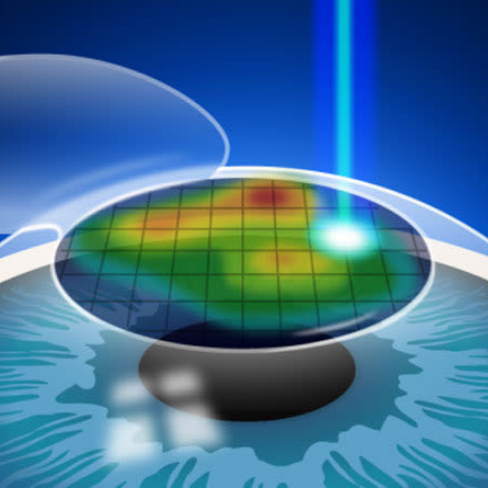
PRK
Removing Layer Of Cornea Delayed Recovery Time.
How
PRK Surgery Works: A Detailed Guide
One kind of laser eye surgery called photorefractive keratectomy (PRK) is used
to treat astigmatism, farsightedness, and nearsightedness. Since the beginning,
PRK has undergone substantial research and development as one of the earliest
categories of laser eye procedures for vision correction. This blog will give a
thorough explanation of PRK surgery, including its advantages, specifics of the
treatment, recuperation time, and any hazards.
Understanding
PRK Surgery
With
PRK, an excimer laser is used to reshape the cornea during refractive surgery.
In contrast to another common type of laser eye surgery called LASIK, PRK
doesn't need making a flap in the cornea. Rather, in order to enable the laser
to modify the underlying corneal tissue, the cornea's outer layer, or
epithelium, is removed. Those with thinner corneas or those whose lifestyle or
employment makes flap-related issues less acceptable may find this to be
advantageous.
The
Science Behind PRK
Uneven
corneal shapes are frequently the root cause of vision issues such as
astigmatism, hyperopia, and myopia (nearsightedness). Light is focused onto the
retina at the rear of the eye by the cornea. Blurred vision is caused by
improper light focus caused by an imperfectly formed cornea.
In order to accurately focus light entering the eye onto the retina, PRK
reshapes the cornea by carefully removing minute quantities of corneal tissue
with an excimer laser. Photo ablation is a highly controlled method that can
improve vision by correcting refractive defects.
The
PRK Procedure: Step-by-Step
1.
Pre-Surgery Preparation
- Consultation and Evaluation: To ascertain a patient's eligibility
for PRK, a thorough eye examination is performed prior to surgery. This entails
assessing general eye health, mapping the corneal surface, and measuring
corneal thickness.
- Preoperative Directives: As contacts might change the curvature of
the cornea, patients may be recommended to stop wearing them for a few weeks
prior to the procedure.
2.
During the Surgery
- Anesthesia: To make sure
the patient is not uncomfortable throughout the surgery, local anesthesia is
administered at the start of the process in the form of numbing eye drops.
- Epithelium Removal: Using a specialized tool or a diluted alcohol
solution, the surgeon carefully removes the cornea's epithelium.
- Laser Reshaping: The
excimer laser is used by the surgeon to reshape the cornea after the epithelium
has been removed. Based on the patient's pre-surgical measurements, a computer
that controls the laser determines the precise amount of tissue to be removed.
- Bandage Contact Lens: To protect and promote healing, a soft
contact lens is applied to the eye following laser treatment. For several days,
this bandage lens is left in place while the epithelium heals.
3.
Post-Surgery
Recovery
- Initial Recovery: For the
first few days following surgery, patients can anticipate some discomfort,
including a gritty feeling, tears, and light sensitivity. To treat these
symptoms, doctors administer eye drops with painkillers and anti-inflammatory
properties.
- Epithelial
Healing: The bandaged contact lens is removed after the epithelial layer
has healed, usually in three to five days.
- Stabilization of Vision: It may require a few weeks to many months
for vision to fully stabilize. Patients will schedule follow-up consultations
during this time to track the development of their vision and recovery.
Benefits
of PRK Surgery
1. Appropriate for Patients with Thin Corneas: PRK is
frequently suggested for patients who may not be candidates for LASIK because
it does not require making a corneal flap.
2. No Flap Complications: The
possibility of flap-related issues like dislocation or infection is eliminated
when there is no corneal flap.
3. Long-Term Stability: Many
patients who receive PRK achieve 20/20 vision or better. It offers long-term
vision correction and stability.
Possible Dangers and Issues:
-
PRK has some risks and problems, like any surgical surgery, albeit these are
not common. These could consist of:
1.
Infection: There is a slight chance of infection
during the healing process of the epithelium, although this may be controlled
with prescribed medications.
2.
Haze: Some patients may develop corneal haze, a
clouding of the cornea, which can affect vision. This usually resolves over
time but may require additional treatment in some cases.
3.
Dry
Eyes: Dryness and
discomfort are common during the initial healing phase, but these symptoms
typically improve as the eye heals.
4.
Regression: In rare cases, the eye may regress towards
its original prescription, necessitating additional corrective surgery.
Post-Surgery
Care and Tips
• Follow-Up Appointments: It's essential
to attend all follow-up appointments in order to track healing and quickly
address any issues.
• Prevent Eye pressure: During the
early stages of recuperation, patients should refrain from engaging in
activities that put pressure on their eyes, such as reading or using digital
devices.
• Protect the Eyes: You can speed up
the healing process by avoiding dusty or smoke-filled areas and using
sunglasses to shield your eyes from UV rays.
• Follow Medication Schedule: It's
critical to use recommended eye drops as instructed in order to control inflammation
and prevent infection.
Conclusion
For the safe and
efficient correction of refractive defects and enhancement of vision, PRK
surgery is a viable alternative. PRK can give long-term vision correction
without the need for a corneal flap by precisely reshaping the cornea using a
laser. Even though recovery time might be longer than with LASIK, many patients
find it to be a worthwhile alternative because of the advantages, especially
for those with thinner corneas.
Speak with a licensed ophthalmologist if you're thinking about PRK surgery to
find out if it's the best option for you. Clear, sharp vision from PRK can
greatly improve your quality of life with the right care and follow-up.
See this thorough guide for more information about PRK surgery, or speak with
your eye care specialist.
Most Popular Doctors
It is a long established fact that a reader will be distracted by the readable content of a page when looking at its layout.




